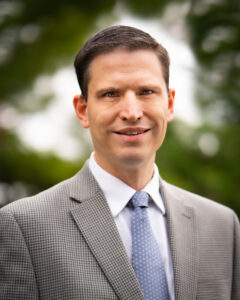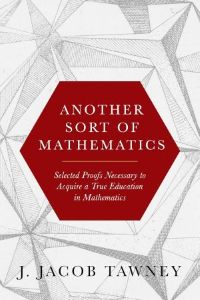This 16-lesson course features Jake Tawney, the Vice President of Curriculum for the Great Hearts network of schools. Jake presents a classical vision for mathematics and then takes participants through a tour of a short “canon” of mathematical theorems and proofs. These theorems and proofs (including some unsolved problems) will be most applicable in upper school classrooms.
As Great Hearts has grown from one school of 140 students to 32 schools with over 20,000 students by 2021, Jake has had an ongoing opportunity to think about the discipline of mathematics and its place and presentation in a classical curriculum.
This course content does not propose a specific curriculum. It does, however, present a list of “those things from mathematics you should have learned but probably didn’t.” In the opening lessons of the course you will hear that truth is effusive. Upon its discovery truth demands to be shared, and the mathematical proof is the medium through which mathematical truth is communicated. There are certainly no results in this course that Jake Tawney claims as his own, and many of the mathematical proofs are centuries old. These proofs represent, in a small way, some of the best that has been said within the discipline of mathematics.
Twentieth century philosopher and educator Mortimer Adler (1902-2001) once said, “The best education for the best is the best education for all.” (He was actually quoting his colleague Robert Maynard Hutchins, mid-century president of the University of Chicago.) All people deserve to encounter the best that has been written and spoken in human history, and this is equally true in mathematics as it is in literature, history, and philosophy. Why is it that the phrase, “I cannot read,” elicits such a strong negative reaction, to the point that it would rarely be admitted, but the phrase, “I am not good at math,” is so often said with comfort and perhaps even a hint of pride?
Mathematics is for everyone. Everyone can be good at mathematics, and everyone can certainly acquire a love mathematics. Some of the proofs in this course are harder than others, but there are none that require any university-level background. A beautiful proof elicits the idea of the theorem it sets out to prove and does not get bogged down in terminology and notation. This does not mean that these proofs can be understood without struggle. Elegance and simplicity are not the same thing. The proofs presented here are elegant, and it is because of this elegance that they are worth struggling through, or perhaps struggling with.
Struggling “through” implies that we have to endure the proof. Struggling “with” is a call to plunge into the proof itself, to dwell with its ideas, and to let them become a part of your memory so that you are, at least in some small way, formed by them. This course assumes and asserts that “There is something unique in the human soul that can only be satisfied by wondering about mathematics.” This means, regardless of your background, regardless of any “math phobia” that has accompanied you on your educational journey, mathematics is for you as are the mathematical proofs presented in this course. We hope that taking this course will help you to reclaim your mathematical inheritance and lead you in new ways to wonder at the world.
This course is complemented by Jake Tawney’s book Another Sort of Mathematics: Selected Proofs Necessary to Acquire a True Education in Mathematics.


To learn more about earning a certificate for this course, please visit “How do I Obtain a Course Certificate?” on our FAQ page. Our course certificates are valued by classical schools and co-ops worldwide, and you can also be on your way to obtaining an elective credit toward a Level 1 certificate with your completion of this course. Teachers certified with either ACSI or ACCS will see continuing education unit (CEU) credits listed on our course certificate for you to submit to either organization (with more information on certification credit here).





